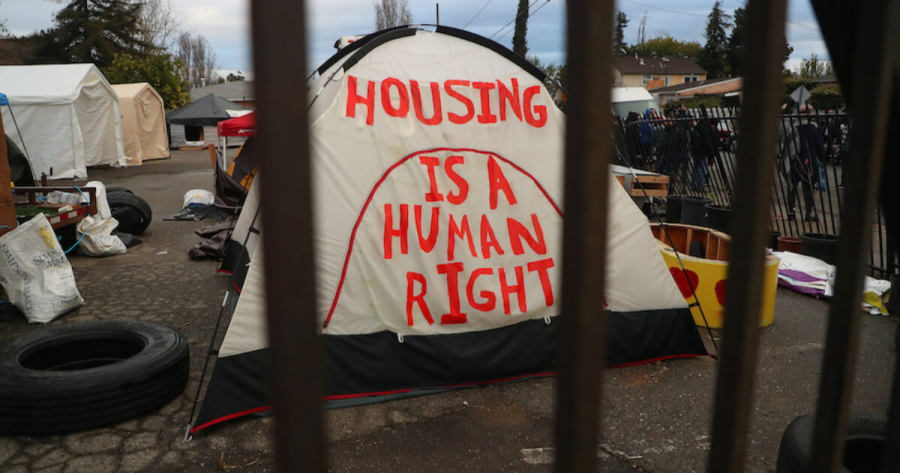
NELSON LAW – NOVEMBER 1ST, 2023
EDITOR: ARYAN SHAFAT
What is a home to you? To some it’s a shelter, to others it is a safe haven for living comfortably and privately. Most people agree that housing is a necessity for all. Yet, imagine a society where the majority of people don’t have adequate shelter. That is the reality of many Californians who struggle to purchase adequate housing amidst the California housing crisis.
In California, housing affordability worsens by the day. As of now, California’s median housing price is 2.5 times the average housing price of the US; worse, housing prices have increased far more quickly than the average income of citizens within California, leading to nearly 30% of the unhoused population in the US to be within the state.
What is the problem with California’s housing market? Well, the problem is multilayered in the sense that there are many factors contributing to the California housing crisis. For one, California inherently has a shortage of labor and construction materials. The shortage of material and labor causes the marginal cost to construct housing to increase significantly, causing firms to increase prices in order to produce sufficient margins for profit maximization. Within the housing sector, from a “microeconomic” standpoint, California has a shortage of housing due to the high cost of construction materials and labor, consequently driving up prices within the housing sector.
In the “macroeconomic” sense, regulations and current interest rate hikes to 5% further creates upward pressure for California housing prices, increasing them by up to 4.9%. For instance, the US has stringent regulations within the housing industry that slow the supply of housing dramatically. The CEQA regulation is a great example, where the Californian government requires zoning controls and containment policies which constantly attempts to reevaluate newly constructed housing. These strict regulations may seem necessary on the surface, however many of these policies are extremely outdated and at a time where housing is desperately required, such regulation creates huge financial tolls on firms which further drives up the cost to create housing.
Furthermore, interest rate hikes by the federal reserve have worsened the housing crisis as well. Increased interest rates cause a substantial increase in mortgage rates which theoretically should reduce demand for housing as cost of purchasing increases, therefore driving down prices within the housing market. Upon assessing the housing market in California, and seeing that certain housing prices have declined, with prices dropping by “6% below the all-time high” This may be considered great news in an effort to solve the housing crisis. However, the consideration neglects the increased mortgage rates at 8% as of 2023. Accounting for mortgage rates and home loans, housing has become even more expensive than before, leading to many individuals who were paying mortgage debts to be unable to fulfill their debt obligations, worsening California’s housing crisis.
While the California housing crisis has impacted many, such as construction and real estate firms, the most heavily impacted are the unhoused people of California. The far cry lies in the fact that many of them are families with parents who have full time jobs, yet due to lack of income they are unable to purchase houses in a close vicinity to their jobs. The only available houses are three to four hours away from work places in urban cities where house prices are comparatively lower and more affordable. Worse, these prices will continue to rise should interest rates continue to rise, which may potentially lead to even more households becoming unhoused within California.
To this day, the housing crisis of California remains unsolved. Therefore, we should ask ourselves: What are some possible solutions?
Firstly, starting with temporary solutions, the California government can build shelters for the unhoused population who have no access to a shelter. According to NPR, a total of “72% of unhoused Californians” were unsheltered which is significantly larger than “New York state, where only 5% are unsheltered.”. The massive difference is extremely alarming, meaning that it is essential for the California government to take action to help the unhoused population in California. Such solutions can range from building homeless shelters or subsidizing shelter care programs. An even more creative strategy would be transitional social housing, a type of housing which is rented at an extremely affordable price, where families have a modular style house to live in for a fixed period of time (around one to two years). Studies have shown that such solutions can have both social and economic benefits: by aiding households to have a temporary housing solution before purchasing a more permanent home in the long run.
On the other hand, some longer term solutions would include building tall, subsidized public flats to encompass a substantially higher population of unhoused individuals. By creating vertical structures instead of the sub-urban style, low level housing in California, there would be more housing per square feet of area, allowing more people to move into bustling urban cities. These buildings can be an effective approach to solve the housing crisis, particularly in urban areas such as Los Angeles or San Francisco. The solution can help solve the problems of households who are earning substantial wages in the cities but are not able to afford the expensive housing there.
Finally, one of the most important policy changes that are required to mitigate the housing problem is changing the state’s strict regulations from a top-to-bottom perspective to a bottom-up approach. By incorporating the opinions of citizens, the government would be able to understand the perspective of more stakeholders within California to justify and create new approaches for solving the housing crisis. For instance, reducing strict regulation on building permits or even reducing the stringency of the CEQA regulation, will help to reduce building costs and ultimately increase the supply of housing in the long run.
All in all, California’s housing crisis is a classic example of where high demand is not in line with the low supply of housing. Should such a problem continue, the population of California who are unhoused and unsheltered will worsen by the day, especially when interest rates are increasing constantly and are hitting record highs almost on a weekly basis. This calls for immediate action from the government to implement temporary to permanent housing solutions (such as the ones listed above) to solve the alarming crisis.
While the problem remains unsolved today, the solution to solving the housing crisis may be in the near future. Looking ahead, collaborative solutions between citizens and governments will create new and innovative solutions to mitigating the overwhelming shortage of housing, which may be the key part to solving the housing crisis in the near future.
Read More About this Project: Housing Crisis Economics
Featured Image Source: The Irvington Voice
Disclaimer: The views published in this journal are those of the individual authors or speakers and do not necessarily reflect the position or policy of Berkeley Economic Review staff, the Undergraduate Economics Association, the UC Berkeley Economics Department and faculty, or the University of California, Berkeley in general.



